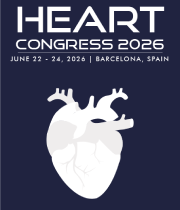Title : IV Iron in heart failure -A Quality Improvement Project (QIP)
Abstract:
Introduction: Heart failure affects more than 64 million people worldwide and causes significant morbidity and mortality. The prevalence of iron deficiency (ID) can reach up to 59% in patients with heart failure. ID is an independent predictor of outcomes and major contributor to exercise tolerance in heart failure. A recent Meta analysis showed that IV iron reduced the risk of composite endpoint of both heart failure admissions or cardiovascular deaths (as a result of reduction recurrent hospitalization). However, the effect of IV iron on CV, death or all-cause mortality was inconclusive. Given significant association of iron deficiency and heart failure and the effects of iron deficiency in the patients, European Society of Cardiology recommends IV iron supplementation in patients with symptomatic heart failure with ID to alleviate heart failure symptoms and improve quality of life (Class IA recommendation).
Causes of iron deficiency in heart failure: ID can be absolute, which is secondary to depletion of iron stores. Iron depletion can result from reduced intake of iron (e.g reduced oral intake and reduced absorption through duodenum (demonstrated in rat models in heart failure)) or loss of iron from the body (e.g GI bleed). ID can be functional which results from demand and supply mismatch. In this case iron is unavailable for cellular metabolism, as it is trapped within reticuloendothelial system such as inflammatory states.
QIP: European Society of Cardiology recommends IV iron replacement in heart failure with reduced ejection fraction, a quality improvement project was carried out in Arrowe Park hospital to improve compliance with guidance.
As per local hospital guidance, inclusion criteria for IV iron therapy is (must meet all)
1. NYHA class II-IV
2. LVEF <or= 45%
3. Ferritin <100 or 100-300 and TSAT <20
4. Hb < 125g/L
Results: All patients with heart failure had echocardiogram performed (not necessarily as inpatient) and all of them had baseline blood tests including FBC was done which was an important part of inclusion criteria.
There was improvement noted in delivering iron therapy to the inpatient cohort meeting criteria for IV iron therapy from 16.6% to 50% after first intervention but there still is room for further improvement. Heart failure service screened most of the patients who missed iron screening during admission and were discharged.
Discussion: IV Iron replacement is an important part of treating co-morbidities in heart failure with reduced ejection fraction to improve quality of life and reduce recurrent hospital admission and is recommended by European Society of Cardiology. It is often overlooked in the treatment of heart failure and proves difficult to attain 100% compliance with guidance. Although there was an improvement in compliance with guidance due to the quality improvement project, there is still room for more improvement which will be carried out in the further cycles of the quality improvement project. It was noted that IV iron was only advised by cardiology teams and further interventions are needed to update all medical specialties to further improve compliance as heart failure is treated in multiple specialties.
Recommendation:
Further cycles of quality improvement project and focus on increasing awareness of guidance in acute medicine and general medicine wards as a good number of patients are treated for heart failure in these specialties. Further discussions with heart failure specialist nurses regarding implementation of advice given by specialty and creating an algorithm for IV Iron therapy making it available to all medical specialties.
Audience Take Away:
- Audience will be updated with guidance by ESC on IV iron replacement in heart failure by ESC benefit of IV iron in heart failure
- Compliance with the guidance regarding IV iron therapy in heart failure and introducing quality improvement project to update colleagues and encourage to do similar quality improvement projects, which is a good education opportunity for cardiology units
- This presentation can we take on as spaces further teaching on optimising heart, failure therapy, and treating comorbidities improve quality of life and heart, failure patients and reduce the current hospital admissions
- Involvement of MDT team explained in this quality improvement project and heart failure service can improve the delivery of care and also improve compliance with guidance
- As mentioned in the abstract, the plan for improving compliance on IV Iron therapy in heart failure and creating an algorithm in the next step to be followed by general medical team can provide information colleagues to implement these changes in their centres. Also the interventions done by our team like arranging teaching, involving heart failure specialist nurse service and further plans to arrange teaching in general medicine wards can also help colleagues implement these changes in their centres



